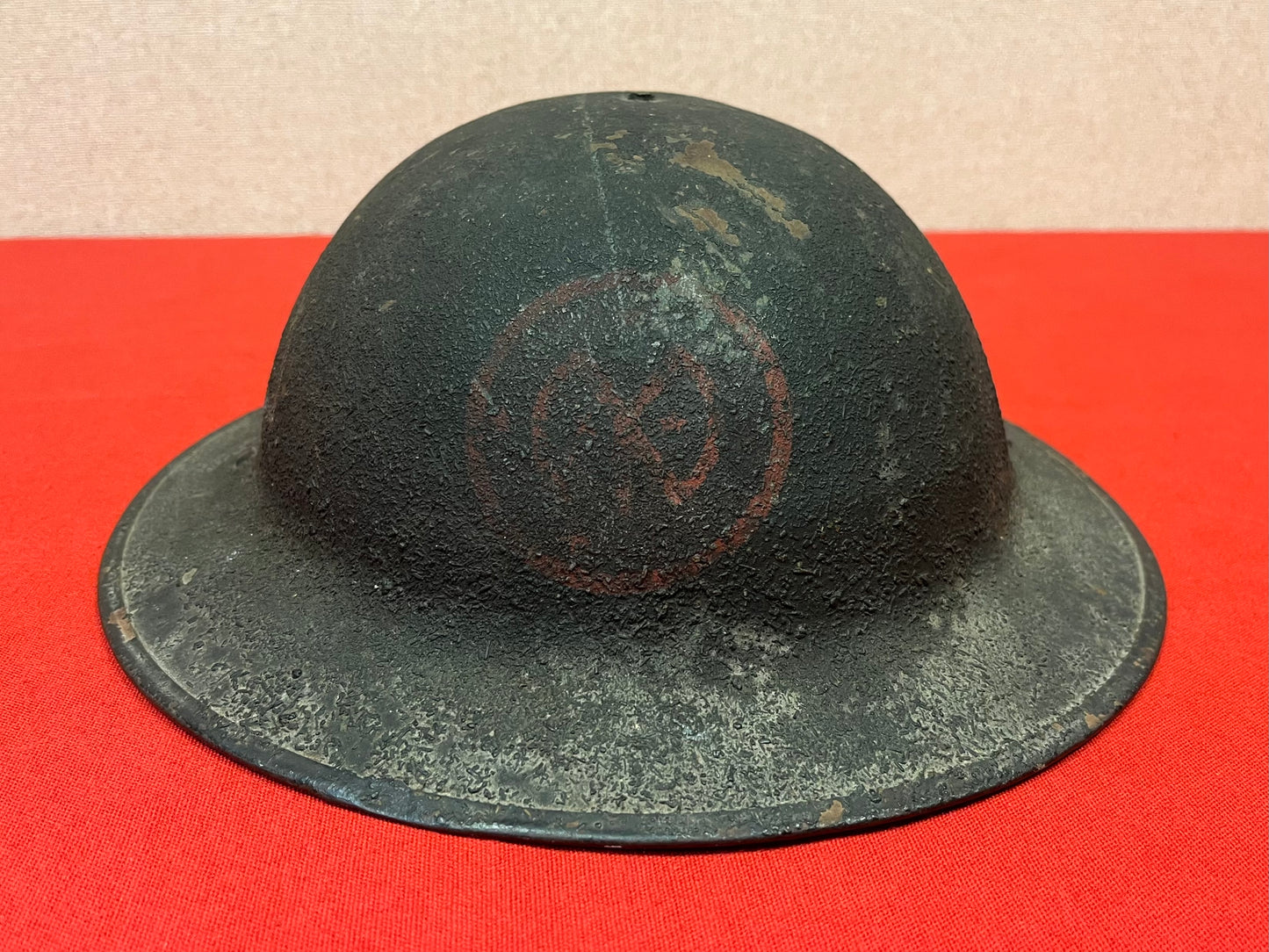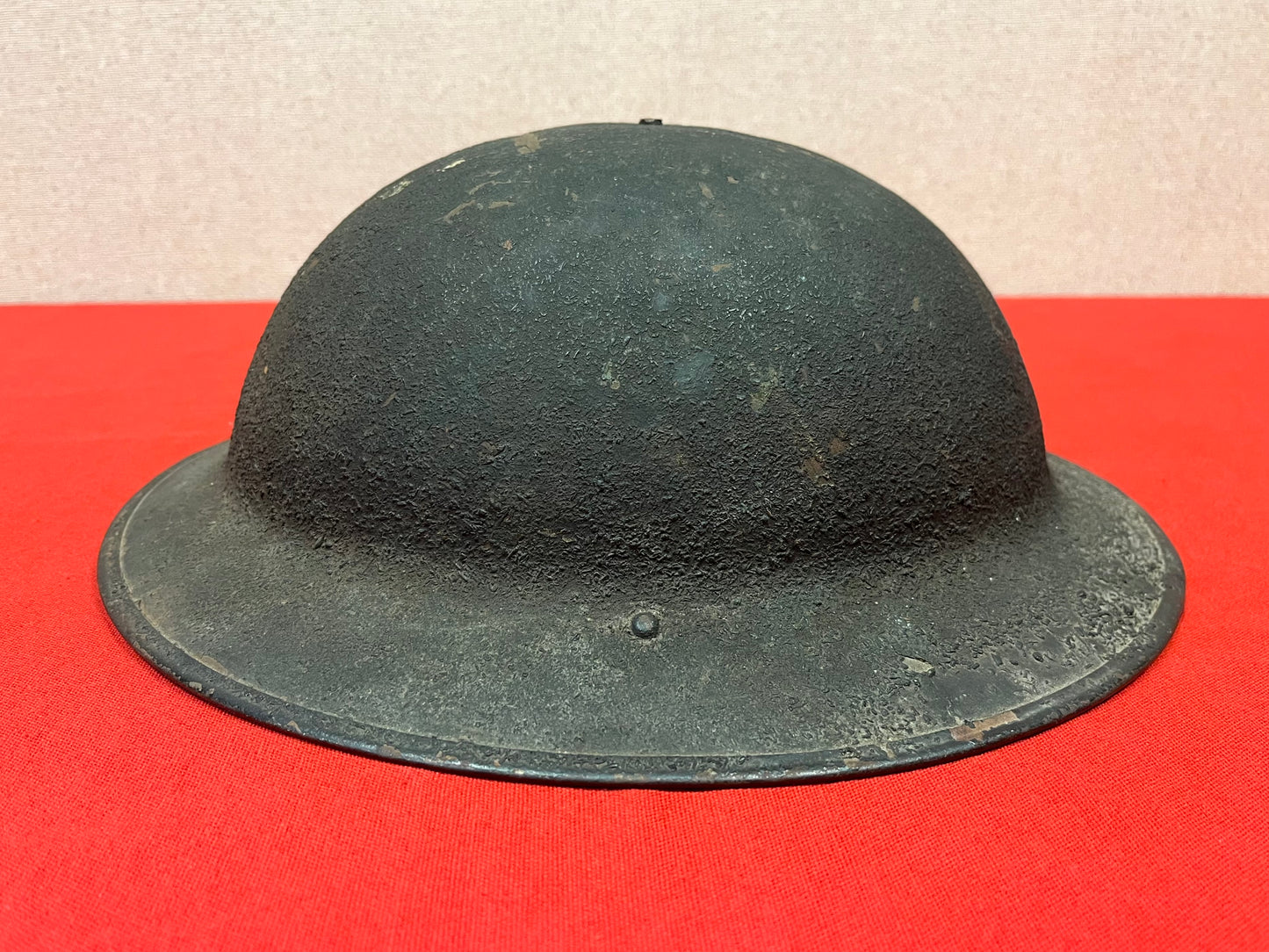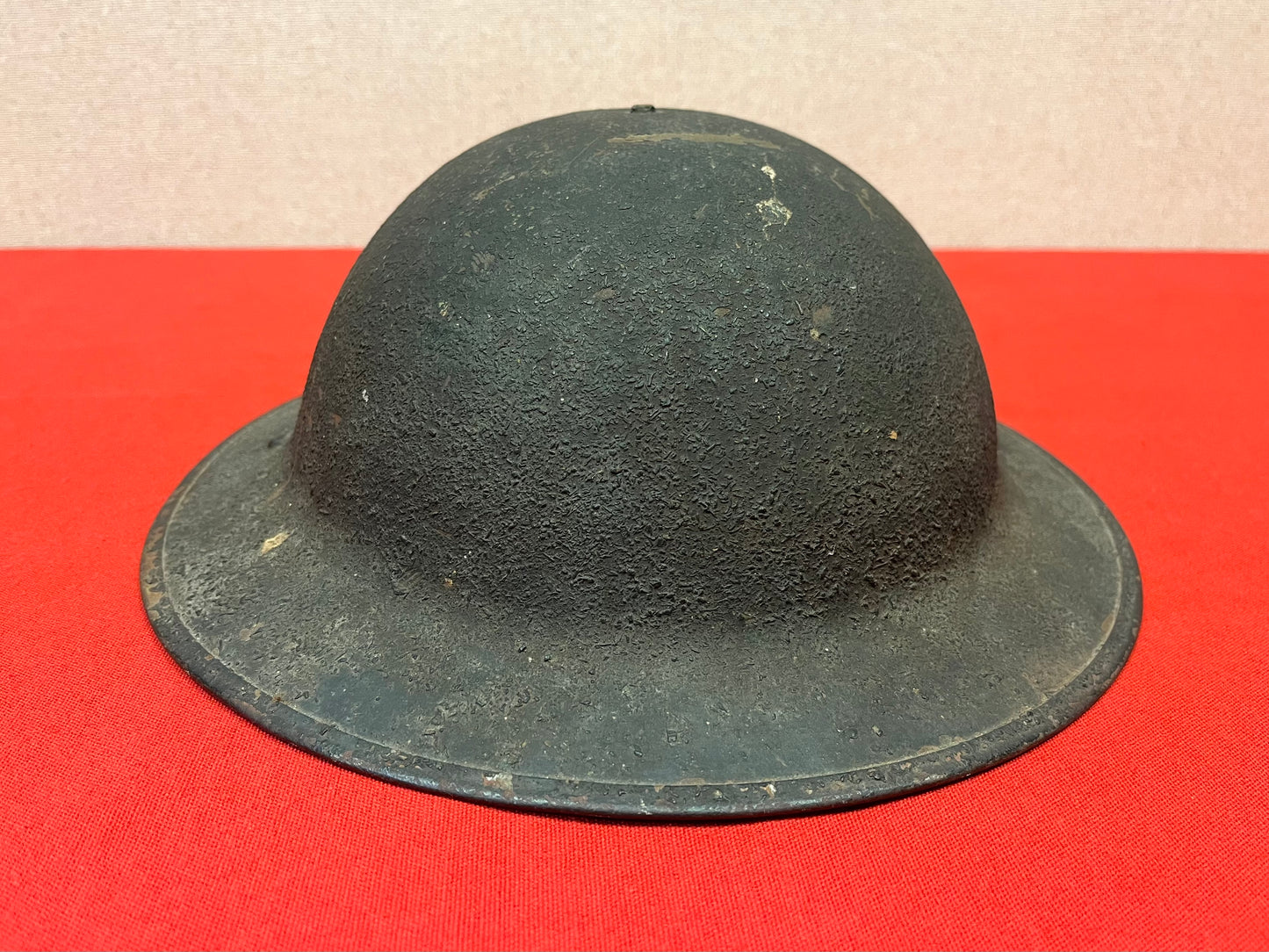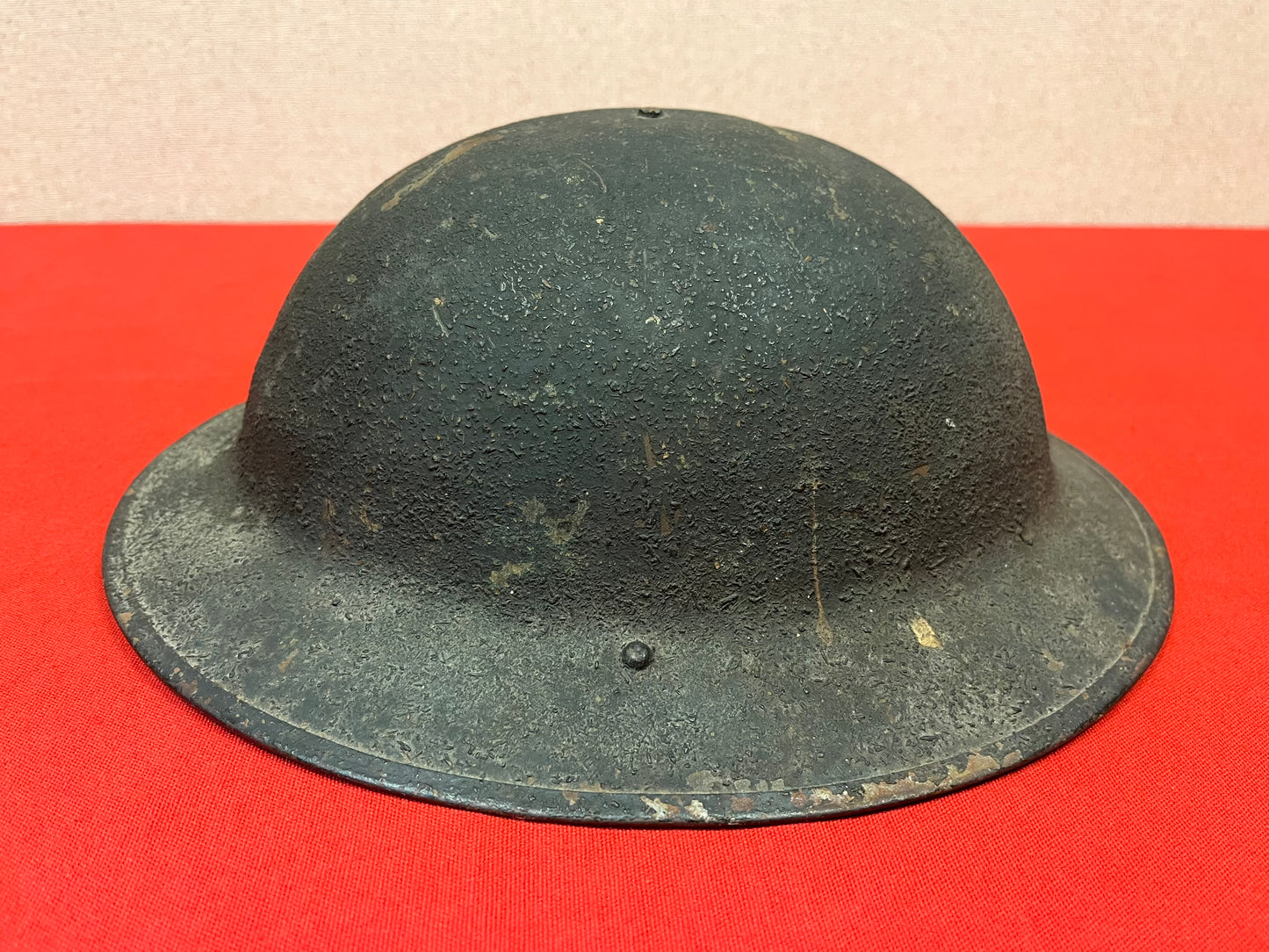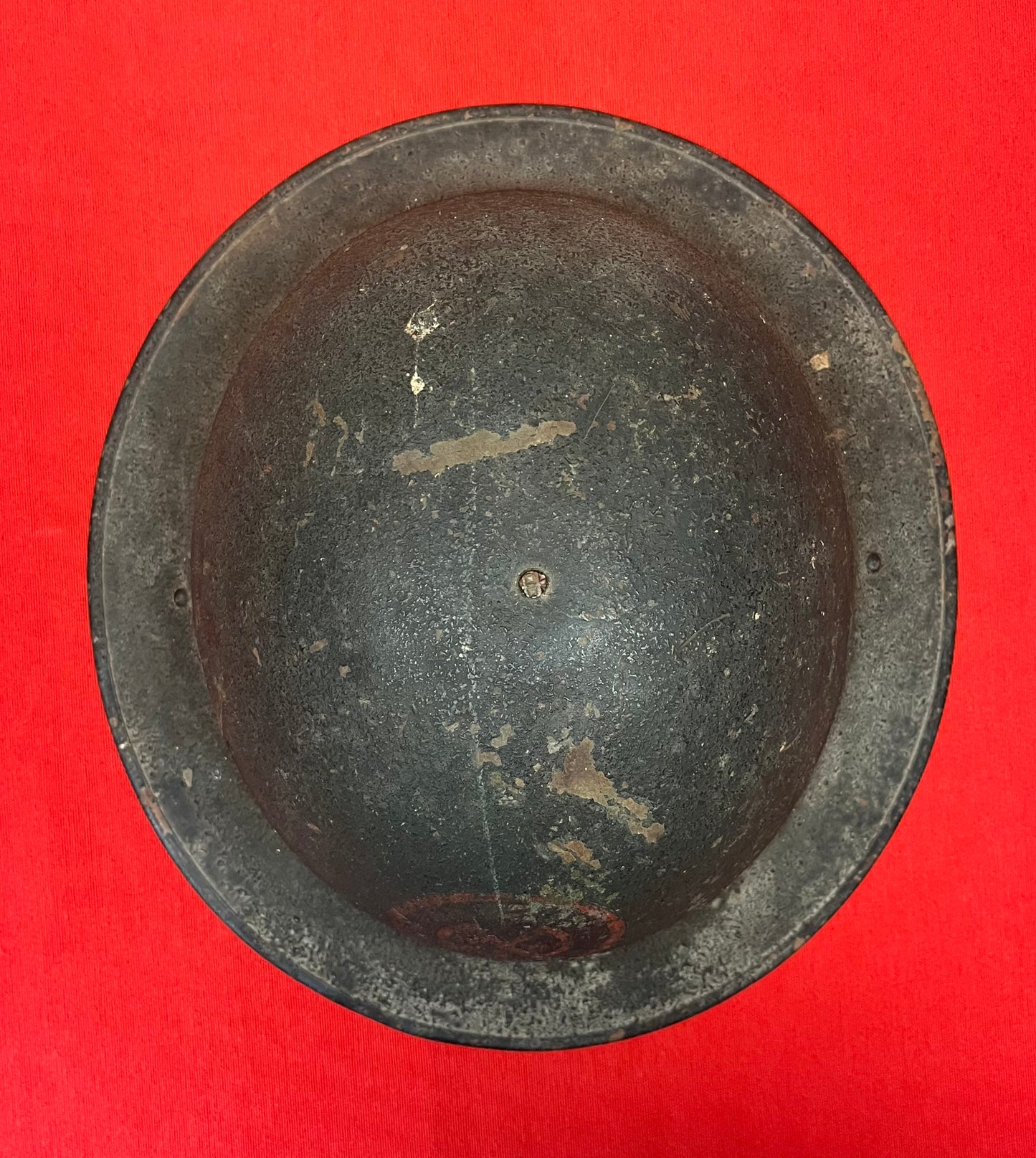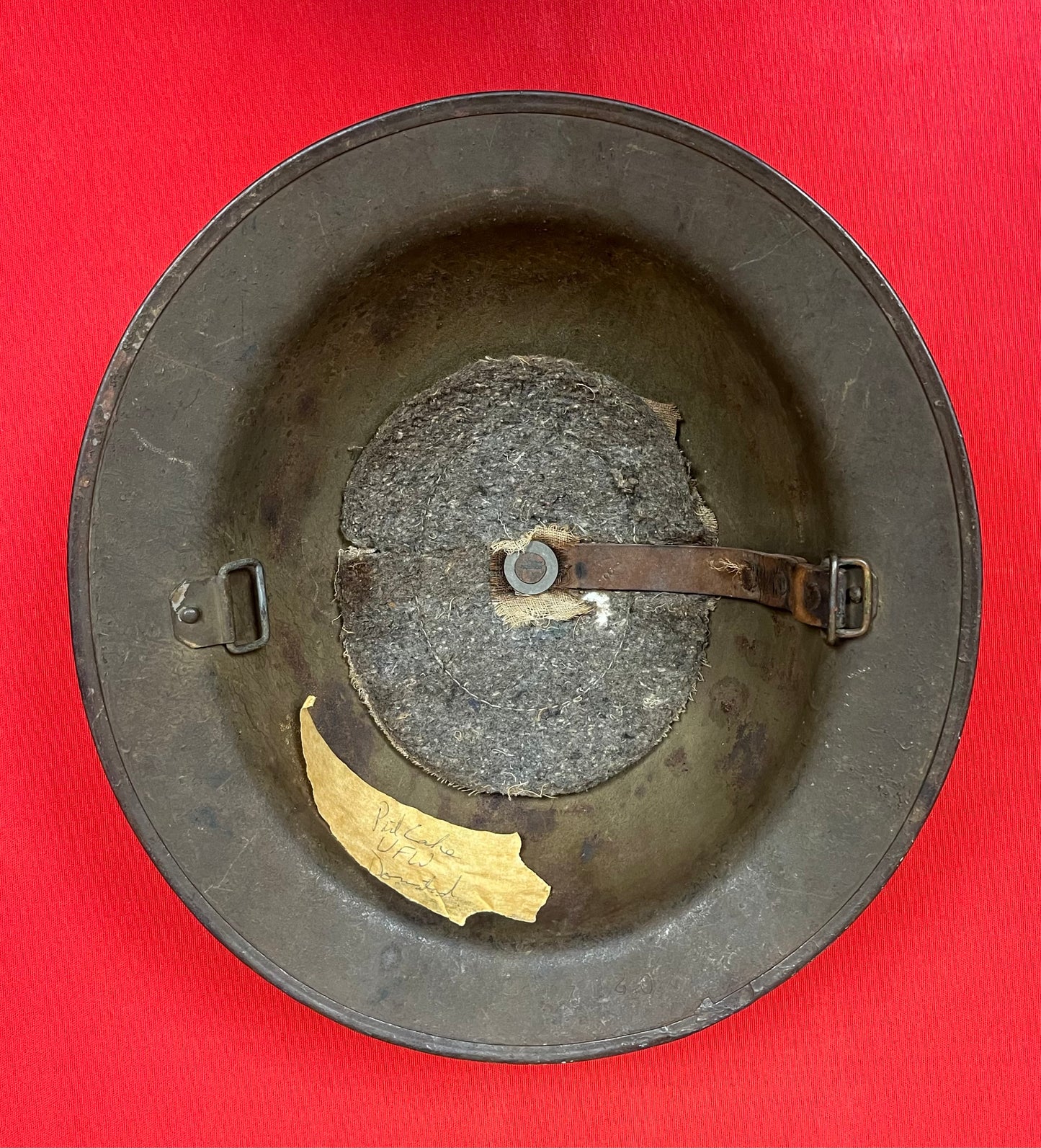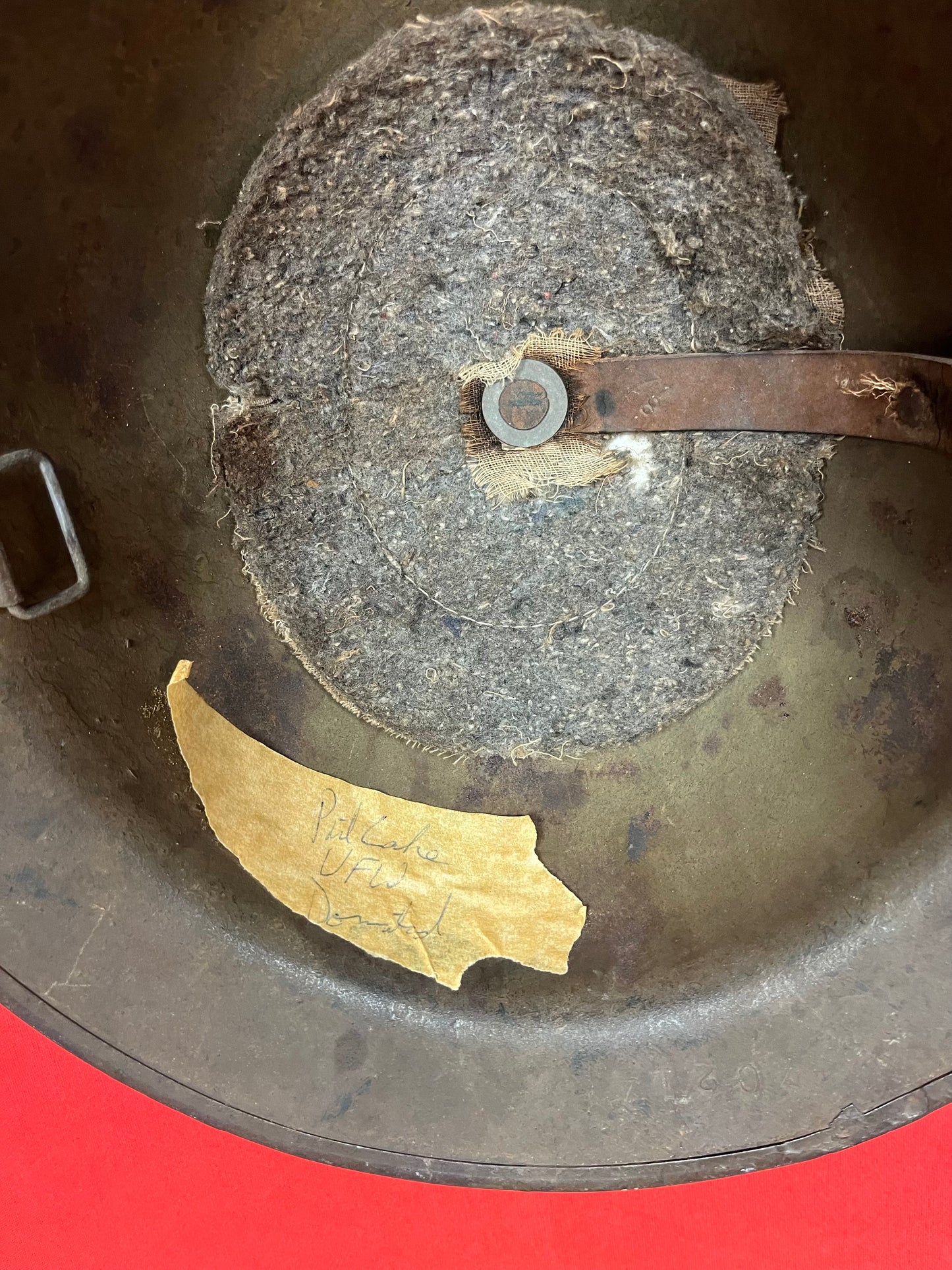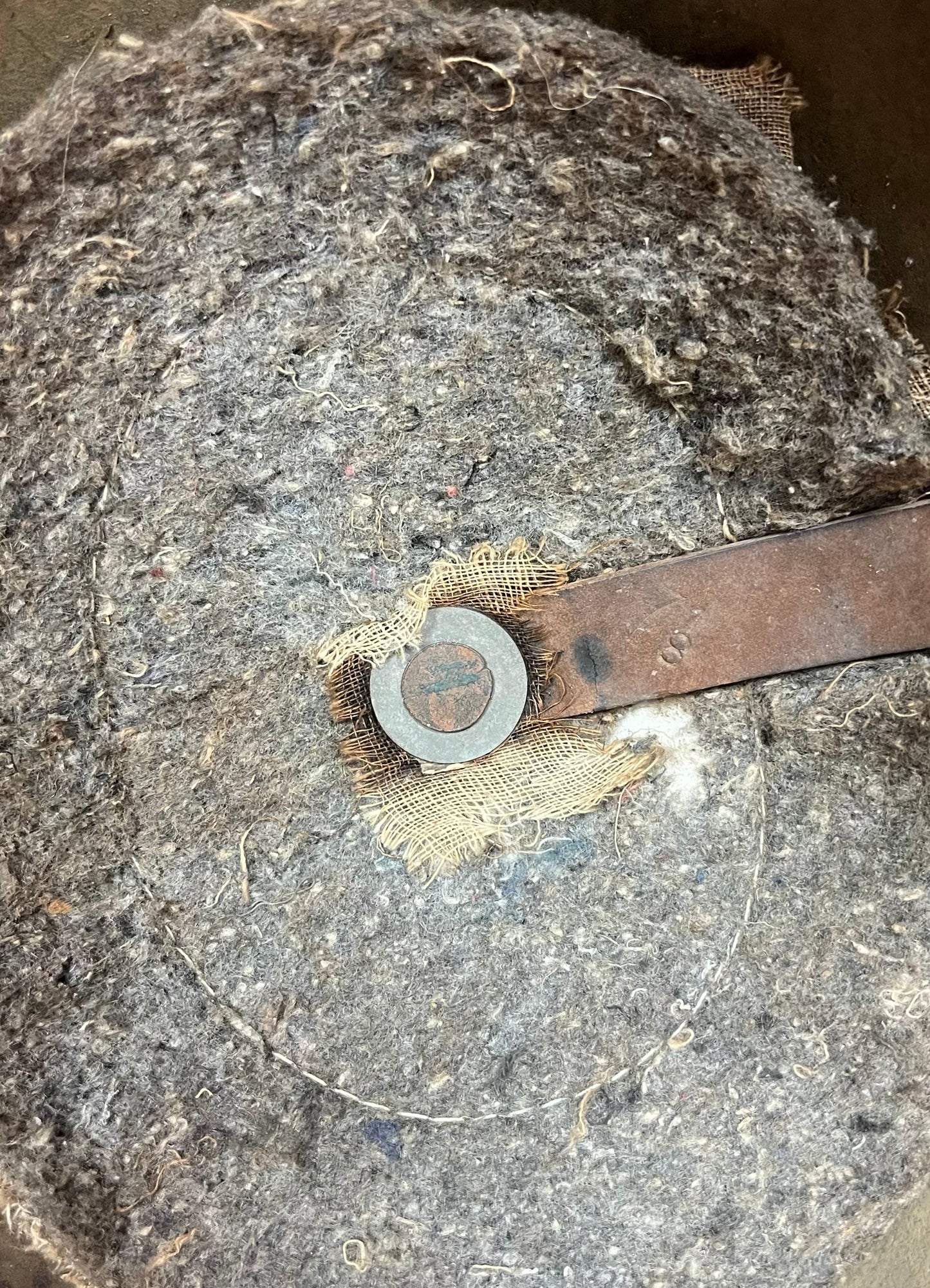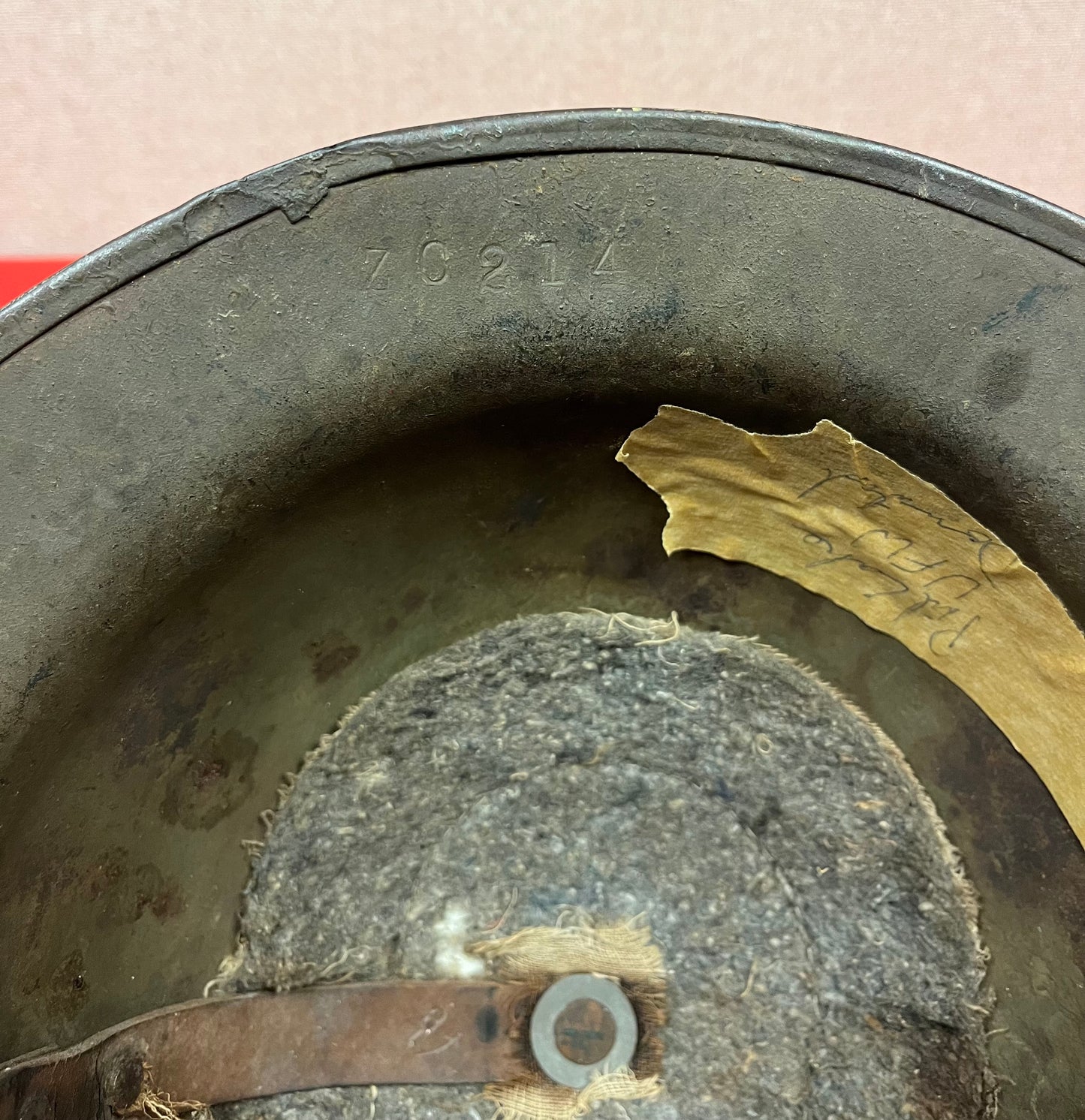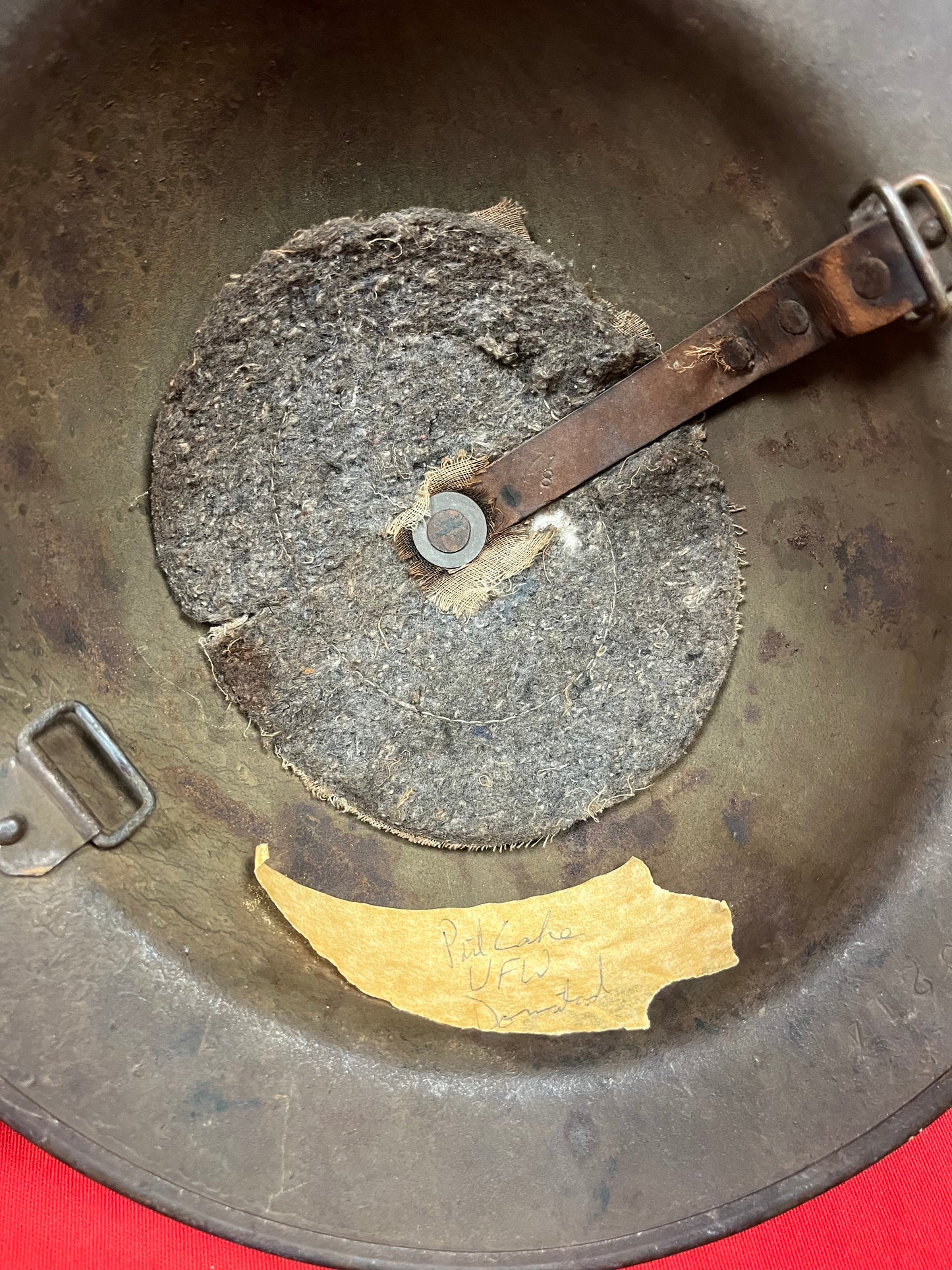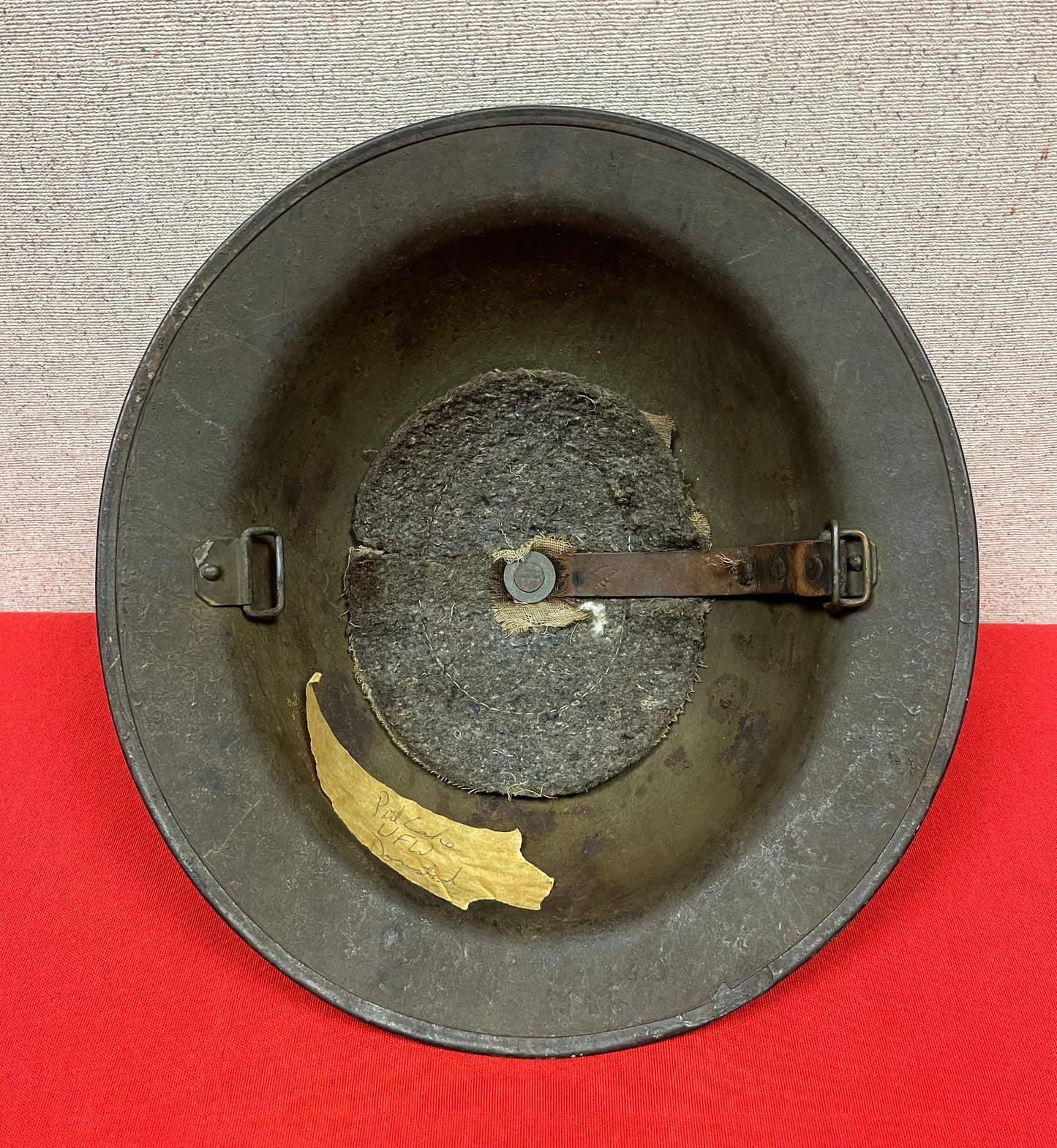U.S. WWI M1917 27th Infantry Division Doughboy Helmet “New York Division” Named
U.S. WWI M1917 27th Infantry Division Doughboy Helmet “New York Division” Named
Couldn't load pickup availability
Item Description:
Painted 27th Division helmet / Named "Phil Lake" donated his helmet to the VFW (Shown on the aging tape inside of the helmet)
Size- 7 1/8 / Missing liner and chinstrap
This is a very nice example of a U.S. M1917 painted "Doughboy" helmet. The front features the painted unit Insignia of the 27th Infantry Division - "New York Division". The logo features an overlapping "NY" monogram, with an "O" around them, for their other nickname, "O'Ryan's Roughnecks". The stars are the constellation "Orion", a pun on their first commanders name.
The paint is in good visible condition, with the expected wear from service. There is a light transfer mark running over the top of the shell. The liner is not present and is missing the chinstrap.
The underside of the rim is stamped ZC214
A wonderful totally original 27th Division helmet ready to display!
History of the 27th "New York" Division
The 27th Infantry Division was a unit of the Army National Guard in World War I and World War II. The division traces its history from the New York Division, formed originally in 1908. The 6th Division designation was changed to the 27th Division in July 1917.
When the New York Division was organized in 1908, the New York National Guard became the second state, after Pennsylvania, to structure its National Guard at such a high tactical level in peacetime. The New York Division was called to active duty during the Mexican border crisis of 1916. While on federal duty, it was redesignated as the 6th Division in June 1916. It was released from active duty in December 1916, only to be recalled for World War I service in July 1917. The 6th Division was reorganized and redesignated as the 27th Division on 1 October 1917.
Called into federal service on 15 July 1917, the Twenty-Seventh Division hastily recruited to increase its numbers and late in August, was concentrated at Camp Wadsworth, near Spartanburg, SC, for intensive training. In the spring of 1918, the division began its movement toward embarkation camps. The division’s advance detachment left Hoboken on 2 May and arrived at Brest, France, 10 May 1918. Late in June the last units of the Twenty-Seventh Division had arrived safely overseas.
Until 24 July the division was in the final stages of training under British mentors, in Picardy and Flanders. On 25 July, the 27th Division less its artillery brigade and 102nd Ammunition Trains, occupied the Dickebusch Lake and Scherpenberg sectors in Flanders. In just over a month, this operation merged into the Ypres-Lys action, and then, from 19 August to 3 September, the 27th was on its own.
The great Somme "push," lasting from 24 September to 1 October, saw the 27th engaged in severe fighting along the Saint Quentin Canal Tunnel—one of the out-lying strong points of the supposedly impregnable Hindenburg Line. Following heavy losses, the 27th was placed into reserve for rest and replacements at the conclusion of the first phase of the Somme Push. Six days later the Twenty-Seventh Division was back into action again, moving steadily toward Busigny on the heels of the retiring Germans.
The 27th Division had, in conjunction with British forces and the 30th Division, American Expeditionary Force, cracking the Hindenburg line wide open.
The 52d Field Artillery Brigade and the 102nd Ammunition Train of the New York Division had not gone with the rest of the Twenty-seventh Division to the British front in Flanders. They had moved up on 28 October, to support the Seventy-Ninth Division in the Argonne.
Meanwhile, the Twenty-Seventh Division units which had seen heavy action in Flanders, had moved back to an area near the French seaport of Brest.
More on the M1917 "Doughboy" Helmet
The M1917 was the US Army's first modern combat helmet, used from 1917 and during the 1920s, before being replaced by the M1917A1. The M1917A1 helmet was an updated version of the M1917 and initially used refurbished WW1 shells.
The M1917 is a near identical version of the British Mk.I steel helmet, and it is important to note that when the US joined the Great War in 1917 they were initially issued with a supply of around 400,000 British made Mk.Is, before production began state side. The M1917 differed slightly in its lining detail, and exhibited US manufacture markings.
M1917 helmet liners typically show a paper label at the crown and the dome rivet head. The liner is set up as on the British versions, with an oilcloth band and net configuration, attached to a leather strap, riveted to the shell. The chinstrap is leather with steel buckle.
Share

